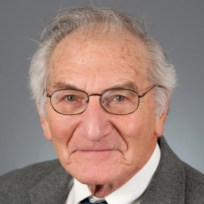Newborn Screening-Past, Present and Future
A special issue of International Journal of Neonatal Screening (ISSN 2409-515X).
Deadline for manuscript submissions: closed (30 December 2016) | Viewed by 47725
Special Issue Editors
Interests: neonatal screening; inborn errors of metabolism; phenylketonuria; homocystinuria; galactosemia; endocrine disorders; program development; bio banking; assistance to developing countries in setting up/expanding NBS; biological anthropology; genetic epidemiology
Special Issue Information
Dear Colleagues,
Even Robert Guthrie could not have envisioned the scope of newborn screening when, in the late 1950s and early 1960s, he developed newborn screening for Phenylketonuria (PKU). He did think that it would expand beyond PKU and, indeed, he added several metabolic disorders to screening and lived to see expansion beyond metabolic disorders to congenital hypothyroidism, as well as congenital adrenal hyperplasia and sickle cell anemia. However, he could not have thought that his simple filter paper dried blood specimen would be used to test for 30–50 disorders, and certainly did not envision the possibility that virtually every genetic disorder could be identified, as is now being considered.
This Special Issue of the International Journal of Neonatal Screening, devoted to “Newborn Screening – Past, Present and Future”, will consider where we have been, where we are, and where we might be going.
Potential Topics:
- NBS in Latin America
- NBS in New England
- Gene sequencing in NBS
- Lysosomal storage disorders in NBS
- Experience of NBS for Krabbe disease
- NBS in Europe or Western Europe or the European Communuity
- The prospect of NBS for adrenoleukodystophy
- NBS by succinylacetone tyrosine as it has changed Tyrosinemia I
- NBS for biotinidase deficiency-converting a disease
- Adding homocysteine to methionine for the methionine metabolic defects
Prof. Dr. Harvey L. Levy
Guest Editor
Mr. Lawrence Chan
Assistant Guest Editor
Manuscript Submission Information
Manuscripts should be submitted online at www.mdpi.com by registering and logging in to this website. Once you are registered, click here to go to the submission form. Manuscripts can be submitted until the deadline. All submissions that pass pre-check are peer-reviewed. Accepted papers will be published continuously in the journal (as soon as accepted) and will be listed together on the special issue website. Research articles, review articles as well as short communications are invited. For planned papers, a title and short abstract (about 100 words) can be sent to the Editorial Office for announcement on this website.
Submitted manuscripts should not have been published previously, nor be under consideration for publication elsewhere (except conference proceedings papers). All manuscripts are thoroughly refereed through a single-blind peer-review process. A guide for authors and other relevant information for submission of manuscripts is available on the Instructions for Authors page. International Journal of Neonatal Screening is an international peer-reviewed open access quarterly journal published by MDPI.
Please visit the Instructions for Authors page before submitting a manuscript. The Article Processing Charge (APC) for publication in this open access journal is 1600 CHF (Swiss Francs). Submitted papers should be well formatted and use good English. Authors may use MDPI's English editing service prior to publication or during author revisions.
Keywords
- newborn screening
- neonatal screening
- phenylketonuria
- PKU
- genetic disorders
- dried blood
- inborn error of metabolism
- phenylalanine hydroxylase deficiency







